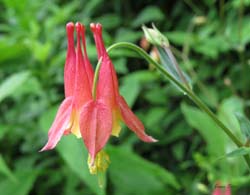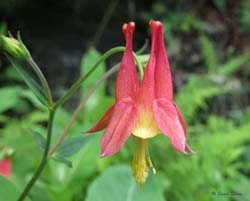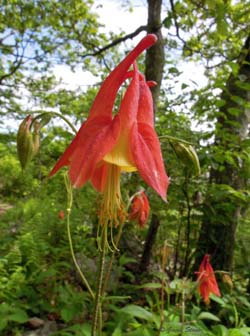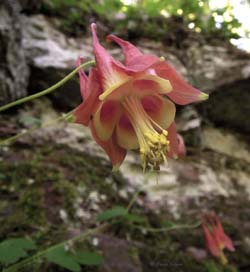Aquilegia canadensis
Wild Columbine
[ click on any image below to see larger version ]
Family:
Ranunculaceae
Mid-Atlantic bloom time:
May - July
When the bloom is viewed from below, you can see five tubes, like strange hats, surrounding the cluster of pistils and stamens.
The genus name Aquilegia comes from the Latin word aquila, which means "an eagle", referring to
the shape of the petals which are said to be like an eagle's claw.
The species name canadensis, of course, refers to Canada.
Wild Columbine is pollinated by hummingbirds and some butterflies with mouth parts long enough to reach the nectar.
Its tiny black seeds ripen at various times within the flower and can be collected by hand over several days in late summer
by gently tapping the old flower.
Seeds should be dried for about 2 weeks in open paper envelopes or bags,
then stored in sealed, plastic bags and kept in a cool dry place until sowing time.
Seeds will stay viable up to 3 years.
According to a
USDA Forest Service webpage (2014),
"Native Americans prepare infusions from various parts of plants of columbine to treat heart trouble, kidney problems, headaches, bladder problems, and fever, and as a wash for poison ivy. Pulverized seeds were used as love charms and a compound was used to detect bewitchment."
21 June 2014
Skyline Drive, Shenandoah National Park (Central District), VA

|
21 June 2014
Skyline Drive, Shenandoah National Park (Central District), VA

|
30 May 2012
Appalachian Trail in Shenandoah National Park (Central District), VA

|
1 May 2013
Manassas National Battlefield Park, Manassas, VA

|
Return to list of flora



